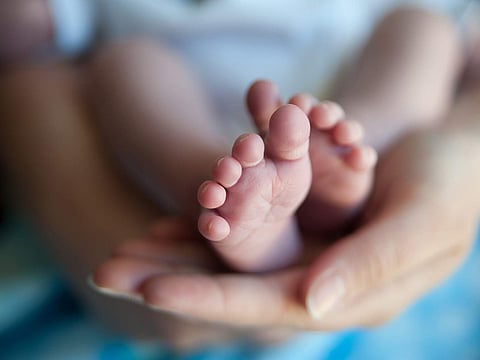Baby girl found ‘pregnant’ with twins
Three-weeks-old baby undergoes operation to have fetuses removed

It’s not just young girls who can get pregnant - babies, too.
A mother from mainland China gave birth to a baby who was later found to be “pregnant” with twins, medical experts confirmed last weekend.
Doctors discovered that the baby girl, born in Queen Elizabeth Hospital in Hong Kong, had two tumours growing in her abdomen.
They later learned the abnormal lumps were fetuses of twin babies, believed to be at 10 weeks of gestation.
Doctors had to perform a surgery on the baby girl when she was three weeks old to remove the fetuses.
One of the fetuses weighed 14.2 grams and the other, 9.3 grams.
Each showed four limbs, intact skin, a rib cage, ambiguous genitalia, spine, intestines, anus and brain tissue. Each fetus also had an umbilical cord connected to a common placenta-like mass.
The birth weight of the “pregnant” baby was 4.07 kilos.
The true cause of the abnormality, which was discovered in November 2010, remains uncertain.
Details of the rare condition, called “fetus-in-fetu” were published only last Saturday in the Hong Kong Medical Journal.
According to the report, “fetus-in-fetu” happens very rarely, with an estimated incidence of one in 500,000 births. Only less than 200 cases have so far been reported in the literature.
Dr. Fady Georges Hachem, consultant for Obstetrics and Gynecology at Burjeel Hospital in Abu Dhabi, confirmed that it's possible for a fetus to develop within a fetus.
He said the condition is a result of an abnormal development of the fetus tissue in the body of a human being.
"There are two theories to the fetus-in-fetu condition. The first theory is called 'parasitic twin theory.' This happens in a twin pregnancy in which both fetuses share a common placenta. The parasitic twin is usually without a brain and lacks some internal organs and unable to survive on its own," said Hachem.
"They could be in other areas, but usually, they exist in the abdominal [area]. The second theory is [called] 'teratoma theory' . It is a fetus tissue which develops and doesn't look like a fetus. It contains no organs but rather one or more tissues normally found in organs, such as the brain, lung and thyroid."
Sign up for the Daily Briefing
Get the latest news and updates straight to your inbox



